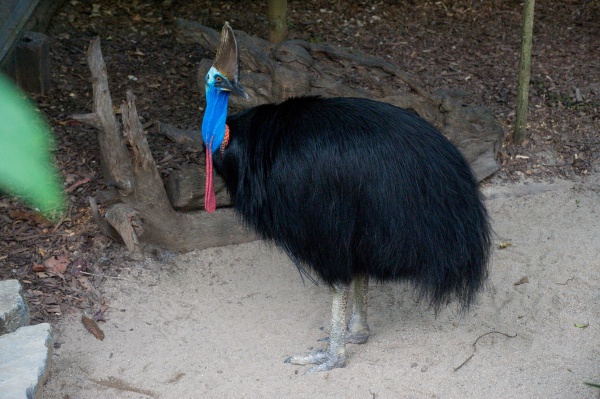Facts About Southern cassowary
The southern cassowary, also known as the double-wattled cassowary, the Australian cassowary, or the two-wattled cassowary, is an intriguing large, flightless bird. It is one of three extant species of cassowaries and belongs to the ratite group, which includes emus, ostriches, rheas, and kiwis. While it's a single species, there are several subspecies, although differentiating between them can be challenging.
First described by Carl Linnaeus in the 18th century, the southern cassowary is distinguished by its striking appearance. It has black feathers, a blue face, a red neck, and two red wattles hanging down. Crowning its head is a helmet-like casque, and its feet are equipped with formidable claws, including a particularly fearsome, dagger-like claw. Females are larger and more dominant than males, while young cassowaries have brown, striped feathers. These birds are among the largest and heaviest in the world.
The southern cassowary can be found in Indonesia, New Guinea, and northeastern Australia. Their primary habitat is tropical rainforests, but they can also be found in savannah forests and mangroves. Their diet mainly consists of fallen fruit, but they also consume fungi, insects, and small animals. Cassowaries are solitary creatures, coming together only during the breeding season. Interestingly, after the female lays the eggs, the male takes on the responsibility of incubating them and caring for the chicks.
Cassowaries are known for their aggressive nature and can be dangerous due to their powerful kicks. Despite this reputation, fatal encounters with humans are extremely rare, with only two reported deaths since 1900. However, the species faces threats from habitat loss, overhunting, and road accidents. While the IUCN Red List classifies the southern cassowary as Least Concern, it is considered Endangered in Australia.
Conservation efforts are complicated by misinformation and negative human interactions, such as feeding the birds, which can lead to dangerous encounters. Protecting this shy but remarkable bird requires a better understanding and respect for its natural behavior and habitat.

 Papua New Guinea
Papua New Guinea